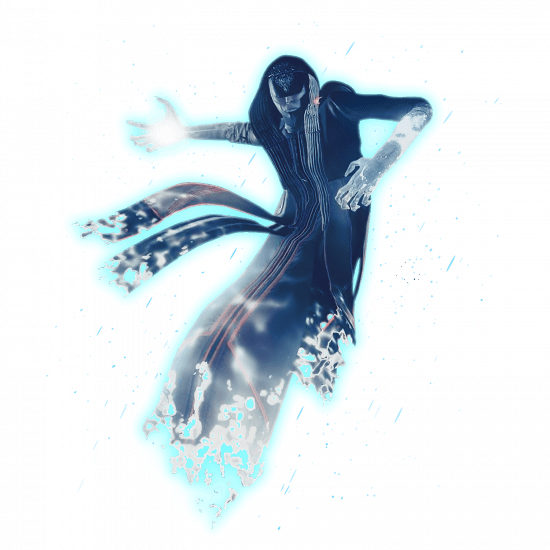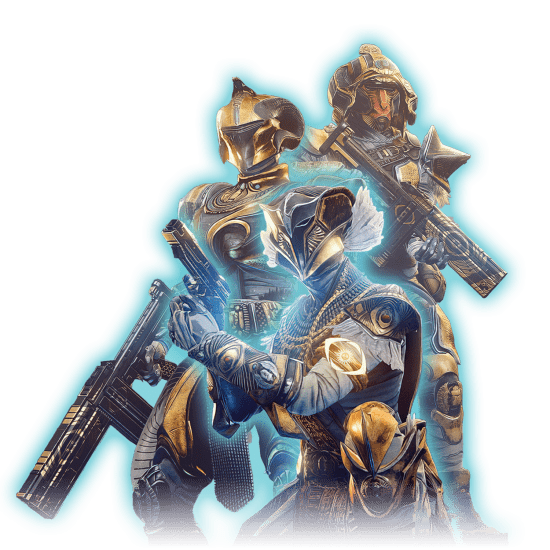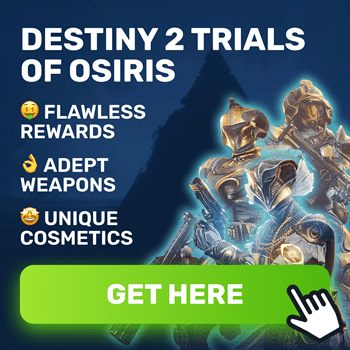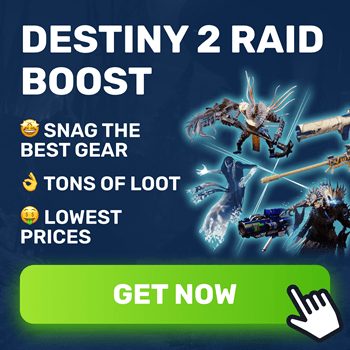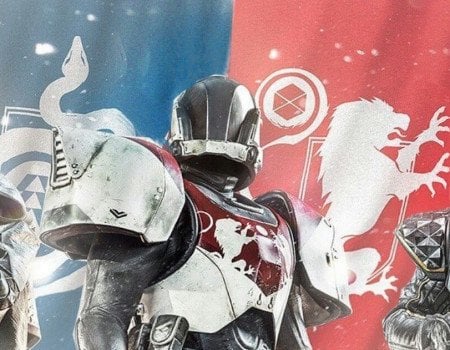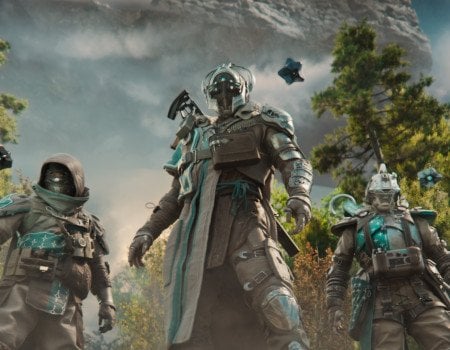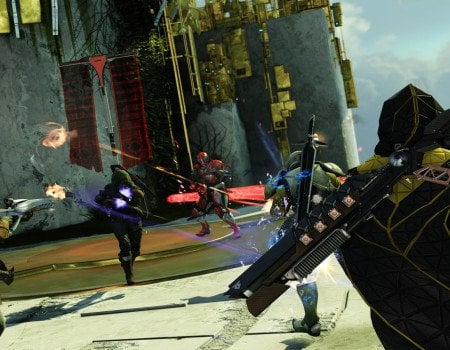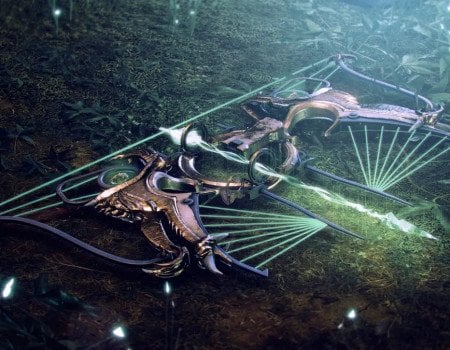Welcome all new Guardians, to our complete Destiny 2 guide for new players! The game has been out for a while but it's never too late to start conquering the raids and exploring the galaxy so rich in lore and secrets. This game is literally a gaming phenomenon, and while the community is often vocal about the things that need change, overall, everybody enjoys the game to this day. The franchise has a bright future, and the game itself will see a change in how the new content will be released. The game is huge content-wise already and there’s a lot to unpack. But worry not, with our Destiny 2 new player guide you will be able to jump into the game and enjoy it to its fullest.
What we’re going to do in this Destiny 2 beginners guide 2025, is walk you through the character creation and the gear system first and then talk about how the game is structured and what kind of activities you can play. At first glance, the game’s content and systems might seem too complex, especially since you know that the game has been constantly updated and new content has been added regularly in the past 7 years. However, at its core, Destiny 2 is quite simple and easy to pick up. In other words, after reading this guide, you’ll know exactly what to do in Destiny 2 when you first launch it.
IMPORTANT NOTE: Apart from learning about the best subclasses in the game, you can also Buy Destiny 2 Boost from Skycoach. We offer a wide range of products at the lowest market price and with the fastest delivery. You can make your first purchase even CHEAPER if you find a special PROMO CODE (highlighted in green) hidden in this article and get a 20% DISCOUNT.
Check out our most popular Destiny 2 Boosting services offered at the best market price:
Creating Your First Guardian
The first thing you need to know about how to play Destiny 2 is your Guardian. A looter shooter always places a huge emphasis on your character and its gear. When you first boot up the game, the first thing you do is create your character. This is where you get the first sign that things might not be as complex as you might have thought. You get to pick from only 3 main classes:
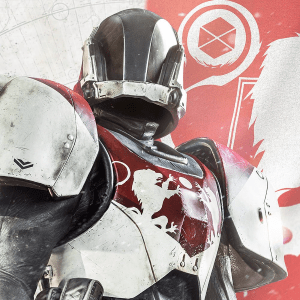 |
Titan | can create shields and have very powerful melee attacks |
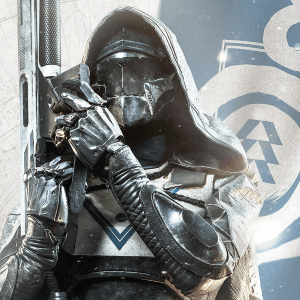 |
Hunter | can quickly dash, go invisible, and throw knives |
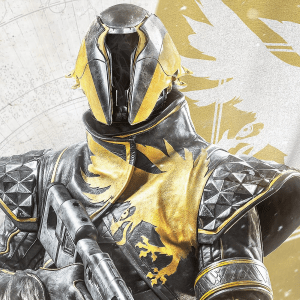 |
Warlock | can create energy pools for healing and can float with double-jump |
Immediately you should feel the difference between these 3 archetypes in Destiny 2 for beginners. Go ahead and pick one, but don’t worry - you can always create two more Guardians if you feel like playing all of the classes. For now though, just stick to one. By the way, if you want to start playing the game and intend to enjoy it, you will want to avoid the unavoidable - the grind. Fortunately, you can buy the Power Leveling service from Skycoach. Our professional veteran D2 players will complete your order fast and without any delays. These PROs will level up your Guardian in-no time, so you will get the endgame-ready character to play with!
Once you’re done making your first Guardian, you’ll be thrown into the game and into your first adventure. The location called Cosmodrome will become your Destiny 2 tutorial zone where you will learn the ropes of how the game works. Follow the missions, speak to the NPCs and whenever you feel lost, use your trusty Ghost companion as he will lead you to your next destination.
In-Depth Character Customization
As you take the first steps of your Destiny 2 walkthrough in the Cosmodrome, kill your first enemies, and you’ll start picking up loot. And if you open up your inventory you will see the core of the game - its gearing system. First, let’s talk about the elements. Elements are types of power that apply to weapons, armor, and abilities. There are 6 elements in the game:
- Kinetic - this element doesn’t add any type of damage or protection. It actually means that a weapon (most commonly) has no additional damage effect. Kinetic weapons are versatile and can be used against any enemy. They are often chosen for their balance and adaptability in various situations.
- Arc - represents the power of lighting. Weapons and abilities with Arc damage are effective against Arc shields on enemies and have a distinctive blue color. Arc damage is often associated with subclasses and weapons that focus on rapid, electrical attacks. It's useful against enemies with Arc shields, and some enemies may be weak to Arc damage.
- Solar - represents the power of the sun and fire. Weapons and abilities with Solar damage are effective against Solar shields on enemies and have a distinctive orange color. Solar damage is often associated with subclasses and weapons that deal in fiery attacks. It's effective against enemies with Solar shields, and some enemies may be weak to Solar damage.
- Void - represents the power of darkness. Weapons and abilities with Void damage are effective against Void shields on enemies and have a distinctive purple color. Void damage is often associated with subclasses and weapons that focus on void energy. It's effective against enemies with Void shields, and some enemies may be weak to Void damage.
- Stasis - represents staleness and ice. Stasis is unique as it introduces a new set of subclasses with freezing abilities. It allows players to control the battlefield by freezing enemies, creating defensive barriers, and dealing damage in a new way.
- Strand - the latest element added to the game, also represents darkness like Void and Stasis but in a different form. Its abilities are based on manipulation of the so-called Weave and its ability to create Threads.
The gameplay revolves around these 6 energies and types of damage. Every Destiny 2 how to play search result will have this same explanation. Obviously, the armor that you can equip and certain tough enemies also have the same elements. In the case of enemies, to defeat an enemy with a certain elemental shield, you must match the damage of that element. BLOG20
On top of that, your class has 5 subclasses, one per each element, except the Kinetic. So, in total there are 15 classes with vastly different abilities, supers, and roles.
Destiny 2 Weapons
Our next part of the Destiny 2 new player guide 2025 is going to be dedicated to weapons. Weapons are a huge part of the game, since 90% of your game time you’ll be spending shooting and killing. There are lots of types of weapons:
| Icon | Weapon Type | Description | Notable Examples |
| Auto Rifle | Fully automatic rifles with moderate recoil. | Suros Regime, Gnawing Hunger, The Forward Path | |
| Machine Gun | These belt-fed beasts unleash torrents of bullets, shredding through groups of enemies with ease. | Thunderlord, Xenophage, Sleeper Simulant | |
| Hand Cannon | High-damage, semi-automatic pistols. | Better Devils, Ace of Spades, Spare Rations | |
| Pulse Rifle | Burst-fire rifles, balanced between range and rate of fire. | Bygones, Outbreak Perfected, Sacred Provenance | |
| Scout Rifle | Long-range, precision rifles. | MIDA Multi-Tool, Nameless Midnight, Patron of the Lost | |
| Submachine Gun | Rapid-fire, close-quarters weapons. | Riskrunner, The Recluse, Huckleberry | |
| Shotgun | Short-range, high-damage weapons. | Mindbender's Ambition, Felwinter's Lie, The Fourth Horseman | |
| Sniper Rifle | Long-range, precision rifles. | Beloved, Revoker, Whisper of the Worm | |
| Fusion Rifle | Energy weapons that charge up and release a burst of damage. | Erentil FR4, Jötunn, Telesto | |
| Grenade Launcher | Launches explosive grenades. | Mountaintop, Play of the Game, The Militia's Birthright | |
| Rocket Launcher | Fires rockets for high-damage attacks. | Wardcliff Coil, Truth, Bad Omens | |
| Sword | Melee weapons for close-quarters combat. | Black Talon, Falling Guillotine, Crown-Splitter | |
 |
Glaives | lose-quarters combat specialists that blend the lethality of swords with the versatility of polearms | Lubrae's Ruin, Nezarec's Whisper, The Enigma |
| Linear Fusion Rifle | Fires a single, high-damage energy beam. | Sleeper Simulant, Line in the Sand, Arbalest | |
| Combat Bow | Fires arrows for precision damage. | Le Monarque, Wish-Ender, No Turning Back | |
 |
Sidearm | Compact, semi-automatic handguns. | Last Hope, Drang, Traveler's Judgment 5 |
Each weapon type serves a purpose. Want to know how to start Destiny 2 the right way? You should pick the weapon style based on your preferred playstyle or based on what type of activity you want to play. For example: if you love shotguns in FPS games like Doom, pick shotguns. Or if you’re about to play some activity where you know you’re going to be defending positions from waves of incoming enemies, you’ll probably want to grab a Machine Gun or Auto Rifle that has lots of bullets in the magazine.
Destiny 2 Rarity System
Destiny 2 utilizes a rarity system to categorize and signify the power level and uniqueness of in-game items. It is the most difficult thing you need to understand if you’re planning on Destiny 2 getting started in 2025. This system consists of several tiers, each represented by a specific color and associated with different types of gear. Keep in mind that game mechanics and features may have changed since then, so it's advisable to check the most recent information in the game or its official channels.
The rarity system in this game is a fundamental component strategically employed by the developers to enhance various aspects of the game. This system provides players with a clear sense of progression as they gradually advance from Common to Exotic gear, creating a tangible evolution in their characters and equipment. So, before we get into “Destiny 2 what to do”, we should first explore this system.
The distribution of rarities across different activities encourages players to explore various facets of the game world, whether through story missions, strikes, raids, or pinnacle activities. The limitation on equipping only one Exotic weapon and one Exotic armor piece at a time adds strategic depth to loadout customization, requiring players to carefully choose their gear based on playstyle and specific challenges.
Here's a breakdown of the rarity tiers:
- Common (White): Basic gear with a low power level. Common items are typically used during the early stages of the game and are quickly replaced as players progress.
- Uncommon (Green): Slightly better than Common gear but still of lower power. Uncommon items are also used in the early game and are gradually replaced with higher-tier gear.
- Rare (Blue): Decent-quality gear with higher power levels. Blue items are more relevant in the mid-game and can provide useful perks or bonuses.
- Legendary (Purple): High-quality gear with notable perks and a substantial power level. Legendary items are a significant part of endgame content and are often sought after by players for their unique abilities and customization options.
- Exotic (Gold/Yellow): The rarest and most powerful gear in the game. Exotic items are characterized by their distinctive appearance, powerful abilities, and unique perks. Players can usually equip only one Exotic weapon and one Exotic armor piece at a time. Obtaining Exotics often involves completing challenging quests, activities, or special events.
In addition to these tiers, Destiny 2 also has a system called Masterworking, allowing players to further enhance the stats of their gear. Weapons and armor can be infused with higher-power items to maintain their relevance as players progress through the game.
Legendary and Exotic rarities are closely tied to endgame content, motivating players to pursue these high-tier items for challenging activities and PvP encounters. The rarity system fosters community engagement as players share their experiences, strategies, and excitement over obtaining rare and powerful gear.
Seasonal artifacts add even more variability to the game, providing temporary boosts and unique mods for players to experiment with each season. This system ensures ongoing engagement by offering incentives for players to return and explore new content regularly.
Overall, the rarity system is a key design element that contributes to the game's longevity. By structuring the system to align with different tiers of content, developers maintain a dynamic and engaging experience, continuously evolving the rarity system through updates and expansions to keep the Destiny 2 community both challenged and rewarded.
Destiny 2 Inventory System and Equipment Slots
This next part of the Destiny noob guide will cover the inventory system. Your inventory consists of 12 slots of equipment. There are slots for pieces of armor, weapons, Ghosts, etc. You’re free to mix and match any pieces of gear you have to not only make your Guardian look different but to make them more powerful. Here are all the equipment slots:
| No. | Slot | Descripton | Examples |
| 1 | Kinetic Weapon | Primary weapons with conventional ammo. | Auto Rifles, Hand Cannons, Pulse Rifles |
| 2 | Energy Weapon | Weapons with energy-based ammo and elemental damage. | Submachine Guns, Fusion Rifles, Solar Hand Cannons |
| 3 | Power Weapon | Heavy-hitting weapons with limited ammo. | Shotguns, Rocket Launchers, Swords |
| 4 | Helmet | Armor for the head with perks related to abilities. | Helm of Saint-14, Celestial Nighthawk |
| 5 | Gauntlets | Armor for arms with perks related to weapon handling. | Ophidia Spathe, Sealed Ahamkara Grasps |
| 6 | Chest Armor | Torso armor with perks related to resilience, etc. | One-Eyed Mask, Heart of Inmost Light |
| 7 | Leg Armor | Leg armor with perks related to mobility and speed. | Dunemarchers, St0mp-EE5, Transversive Steps |
| 8 | Class Item | Cloaks, marks, or bonds with cosmetic and perk bonuses | Cloak of Taniks, Mark of the Great Hunt, Bond of the Worthy |
| 9 | Ghost Shell | AI companions with various benefits. | Sagira's Shell, Cosmos Shell, Guiding Light |
| 10 | Artifact (Seasonal) | Seasonal artifact providing Power Level bonuses. | Queensfoil Censer |
| 11 | Sparrow | Emotes for character animations and rideable Sparrows | Spire of Stars Emote, G-335 Anseris Overdrive |
| 12 | Ship | Spacecraft for in-game travel. | Eon Drive, Fermi Solution, Amethyst Veil |
The design of the equipment slots is intended to provide a balanced and strategic approach to gameplay. The limitations on equipping certain types of weapons in specific slots contribute to the overall game balance and prevent potentially overpowered loadouts. Here's an explanation of how these slots work and the reasoning behind the restrictions:
- Kinetic, Energy, and Power Weapons
Kinetic Weapon Slot: This slot is primarily for primary weapons that use conventional ammunition.
Energy Weapon Slot: Weapons in this slot use energy-based ammo and often have elemental damage types (Arc, Solar, or Void).
Power Weapon Slot: This slot is reserved for heavy-hitting weapons, such as shotguns, sniper rifles, rocket launchers, and swords.
This division encourages a balance between different types of weaponry, preventing players from stacking too many powerful options in a single loadout. It also introduces strategic decision-making regarding which weapons to bring into specific encounters.
- One Exotic Weapon Limit
Players can equip only one Exotic weapon and one Exotic armor piece at a time.
Exotic weapons and armor are designed to be exceptionally powerful and often have unique perks that can significantly impact gameplay. The limitation encourages players to make strategic choices about their loadouts and prevents potential combinations that might make characters excessively powerful.
- Power Level and Rarity Significance
Different armor slots contribute to a character's overall Power Level (or Light Level), which determines their effectiveness in various activities. The Power Level system is a key aspect of Destiny 2's progression. It ensures that players engage with a variety of content to improve their characters, rather than simply focusing on acquiring the most powerful items for a single slot.
- Strategic Loadout Customization
The restrictions on equipping certain types of weapons and armor encourage players to think strategically about their loadouts based on the activities they plan to undertake.
By promoting strategic decision-making, developers aim to create a dynamic and diverse gameplay experience. Players are encouraged to adapt their loadouts to different encounters, fostering a more engaging and varied experience.
Overall, these design choices aim to create a balanced and challenging experience for players, ensuring that they engage with a wide range of weapons and armor rather than relying on a singular, potentially overpowered loadout. The system encourages diversity in playstyles and enhances the overall longevity and replayability of the game. It's worth noting that game mechanics and design philosophies may evolve with updates and expansions, so players should refer to the latest in-game information for the most accurate details.
Destiny 2 Game Modes, Activities, and Structure
Destiny 2 where to start is a common inquiry among new players, looking for guidance on the initial steps to embark on their journey in the game. So, now that you’re familiar with your Guardian and the gear they can have, it’s time to leave Cosmodrome and join the rest of the player base up in the Tower. The Tower serves a lobby for the rest of the game, this is a peaceful location where no weapons are allowed. Here you will find -
- Vendors: The Tower is home to several vendors offering weapons, armor, consumables, and cosmetic items.
Cryptarch (Rahool): Decrypts Engrams, revealing the items they contain. - Postmaster: Holds items players missed or couldn't carry during missions.
- Eververse Trading Company: In-game store for cosmetic items, emotes, and ornaments using Silver.
- Banshee-44 (Gunsmith): Provides weapon-related services, including purchasing weapons and completing bounties.
- Ada-1 (Black Armory): Associated with Black Armory content, offers access to Forges for forging powerful weapons.
- Lord Shaxx (Crucible Handler): Oversees Crucible activities, where players can turn in tokens, receive rewards, and pick up Crucible bounties.
- Lord Saladin (Iron Banner Handler): Oversees the recurring Iron Banner games - a PvP game mode that appears and disappears from the game in a certain period of a season.
- Zavala (Vanguard Commander): Head of the Vanguard, offers Vanguard activities such as Strikes and Nightfall Strikes.
- Ikora Rey (Warlock Vanguard): Offers activities and rewards related to lore and seasonal content.
Drifter: the PvPvE Gambit activity handler. - Cayde-6's Memorial: Introduced in the Forsaken expansion, a place to remember the fallen Hunter Vanguard.
- Clan Steward: Provides services related to player clans, including clan bounties and rewards.
- Vaults: Features storage for excess gear and item transfer between characters.
- Social Spaces: The Tower serves as a social space for player interaction, forming fireteams, and engaging in social activities.
- Eve Levante (the event coordinator): The Tower often hosts special in-game events, such as seasonal festivities or limited-time activities, offering unique rewards and challenges.
This is not the full list, as from season to season, players will be able to meet new characters in the Tower as well as witness the change of scenery. However, this is list is basically the core roster of characters that you will be interacting with on a regular basis.
Besides that, you can also open your Director menu from which you can select a Destination - one of the available planets with their own storyline and open-world style of gameplay, similar to what you experienced on the Cosmodrome.
Most of these characters are overseeing their own game mode like Zavala for the PvE Co-Op missions called Strikes and Nightfalls and Lord Shaxx for the PvP Crucible. Your daily routine will include talking to all of these vendors and accepting their daily and weekly bonuses which will essentially provide you with more bonuses and rewards as you play their respective activities.
Destiny 2 Seasons
Seasons are how the developers are pushing the story of the game forward while giving the fans of the game reasons to play the game. Seasons exist so that you don’t have to be stuck in an endless loop of completing daily and weekly bounties. Each season has the same structure with minimal differences, so you always know what to expect.
While the specifics of each season in Destiny 2 can vary considerably, there is a general structure that forms the backbone of most seasons. Here's a breakdown of this structure, keeping in mind that some elements might be tweaked or expanded upon in specific instances:
- Narrative Foundation
Seasonal Theme: Each season revolves around a central theme, which influences the setting, story, enemies, and activities. This theme helps tie the various elements of the season together and provides a unifying thread for players to follow.
Introductory Cutscene/Mission: The season kicks off with a cinematic or gameplay element that establishes the theme and introduces the main conflict or antagonist. This gives players context and sets the stage for their seasonal journey.
Weekly Story Missions: Throughout the season, players unlock and complete weekly story missions that advance the narrative. These missions might reveal new lore, introduce key characters, and build towards a climactic finale.
Seasonal Triumphs and Lore: Additional lore entries and Triumphs (challenges with rewards) are scattered throughout the season, allowing players to delve deeper into the story and lore of the specific theme.
- Engaging Activities
Core Activity: Each season introduces a new, dedicated Activity specific to that season. This activity serves as the main gameplay loop, offering challenges, loot, and progression tied to the seasonal theme. The activity's format can vary – a six-player matchmade event, a three-player dungeon-like experience, or something else entirely.
Strikes and Nightfalls: Existing Strikes and Nightfalls can be updated with modifiers or new enemy types related to the seasonal theme, offering refreshed experiences and potential drops of thematically relevant loot.
Crucible Playlist Updates: New maps, modes, or tweaks to existing Crucible playlists might be introduced, reflecting the seasonal theme and providing fresh PvP experiences.
- Progression and Rewards
Seasonal Rank and Rewards: Players progress through a seasonal rank system by completing activities and challenges. As they rank up, they earn various rewards like weapons, armor, ornaments, and cosmetic items, often themed around the season.
Seasonal Artifact and Mods: A unique artifact with unlockable mods provides temporary power boosts and ability modifications throughout the season, encouraging experimentation and adaptation to new activities and challenges.
Exotic Quests and Weapons: Often, seasons feature quests for obtaining powerful Exotic weapons, tied to the season's narrative or activities. These Exotics offer unique perks and gameplay styles, further incentivizing player engagement.
- Additional Elements
Community Events: developers sometimes adds special events related to the season, offering unique activities, challenges, and rewards. These events encourage community participation and foster a sense of shared experience.
Eververse Store: The Eververse store is updated with new cosmetic items, often themed around the season, which players can acquire through in-game activities or real-money purchases.
Destiny 2 Beginner’s Tips and Tricks
Let’s wrap things up with some great Destiny 2 tips for new players. Enjoying the game is what matters, so this list of suggestions will help you experience the game the way its meant to be:
- Embrace the Grind: Destiny 2 thrives on progression, so prepare to invest time in activities that level you up and earn gear. Don't get discouraged by slow progress at first, it's a marathon, not a sprint.
- Master the Basics: Learn the different weapon types, how to utilize your class abilities effectively, and understand shield types and elemental damage (kinetic for shields, void for shields, etc.).
- Follow the New Light Quest: This campaign acts as a fantastic tutorial, introducing you to core mechanics, Destinations, and even grants some decent starter gear.
- Completing Bounties: Bounties offer targeted gameplay objectives and XP boosts, perfect for efficient leveling and familiarizing yourself with different activities.
- Don't Neglect Public Events: These frequent occurrences in open areas are great for gathering materials, getting involved in the community, and snagging quick loot.
- Join the Vanguard Playlist: This is a low-pressure way to experience Strikes, three-player missions with escalating difficulty. Learn boss mechanics and teamwork in a relaxed environment.
- Power Leveling Priorities: Focus on activities that reward powerful gear upgrades first. Prioritize Nightfall Strikes, the weekly Pinnacle reward, and seasonal activities over repetitive tasks.
- Experiment with Gear: Don't just stick to the highest power level stuff. Try different weapons and armor perks to find what suits your playstyle. You might uncover hidden gems!
- Embrace Community Resources: Websites like Destiny Tracker, Ishtar Collective, and DIM offer invaluable tools for managing your inventory, checking lore entries, and tracking progress.
- Don't Be Afraid to Ask: The Destiny community is generally welcoming and helpful. Don't hesitate to ask questions in-game or on forums for advice or assistance.
- Join a Clan: Find a group of players who share your interests and goals. Clans offer camaraderie, help with tough activities, and make Destiny 2 an even more enjoyable experience.
- Have Fun! Don't get bogged down in min-maxing or chasing the meta. Explore the world, experiment with different builds, and most importantly, enjoy the satisfying gunplay and thrilling adventures Destiny 2 has to offer.
Remember, every Guardian starts somewhere. With these tips and a positive attitude, you'll be conquering raids and forging your legend in no time!
Conclusion
This is, essentially, all the things to know about Destiny 2 to start playing and enjoying the game. There are a lot of elements that make the game complex, but when these elements are looked at separately, turns out they are not very difficult to understand. This is one of those cases of a game that is easy to get in but difficult to master. The gameplay is incredibly fun. It feels fast, and fluid and has that arcade shooter vibe. At the same time, its rich lore, amazing design of levels, and recognizable visual style turned Destiny 2 into one of the most popular vibe games of the recent decade.
It is never too late to try out something new, and you better believe it that every veteran D2 player would love to know that there are those who are about to experience the best moments in the game for the first time ever. Don’t deny yourself this opportunity and start playing today. We’ve equipped you with all the knowledge and Destiny 2 tips and tricks that you will ever need for your first play session. So take that first step and become the immortal Guardian!
F.A.Q.
What Should I Be Doing As A New Destiny 2 Player?
As a new Destiny 2 player, focus on completing the main story campaigns to familiarize yourself with the game's mechanics and lore. Engage in various activities like Strikes, Crucible matches, and Gambit to earn gear and experience different aspects of the game.
Is Destiny 2 Good For New Players?
Destiny 2 is very welcoming to new players, offering a variety of activities with scalable difficulty. The New Light experience provides an introduction to the game, and joining a helpful community or clan can enhance the experience for beginners.
What To Do When First Starting Destiny 2?
When first starting Destiny 2, follow the New Light questline, explore different activities, and gradually visit new destinations. Prioritize leveling up and acquiring better gear by participating in Strikes, Crucible matches, and public events.
Is Destiny 2 Worth Getting Back Into 2025?
Whether Destiny 2 is worth getting back into in 2025 depends on personal preferences and the current state of the game. Developers regularly update the game, introducing new content, and improvements, and addressing community feedback, making it a potentially worthwhile experience for returning players.
What Should I Do First In Destiny 2?
As a new player or someone returning to Destiny 2, start by completing the New Light questline to gain a basic understanding of the game. Afterward, focus on progressing through the main story campaigns and exploring different activities to earn gear and experience.
Is Destiny 2 Good For Beginners?
Destiny 2 caters to beginners with its New Light experience, offering a guided introduction to the game. The progression system allows players to gradually explore various activities and improve their characters, making it accessible for those new to the franchise.
How Do I Get Better At Destiny 2?
To get better at Destiny 2, focus on mastering your chosen class's abilities, understanding weapon mechanics, and practicing in different game modes. Watching tutorials, studying maps, and joining a community or clan can also provide valuable insights and tips.
What Is The Best Class In Destiny 2?
Determining the best class in Destiny 2 depends on individual preferences and playstyles. Warlock, Hunter, and Titan each offer unique abilities and subclasses, and the best class for a player is the one that aligns with their preferred role and gameplay style.
Is Destiny 2 Easy To Get Into In 2025?
Destiny 2 remains very accessible in 2025, especially with the New Light experience designed to guide new players. The game's evolving content and supportive community make it relatively easy for players to get into and enjoy the experience.
Where To Start Destiny 2 2025?
Begin your Destiny 2 journey in 2025 by downloading the game and experiencing the New Light introduction. Follow the guided questline, participate in Strikes, Crucible matches, and Gambit, and gradually explore more challenging activities as you progress. Joining a community or seeking advice from experienced players can enhance your overall experience.




